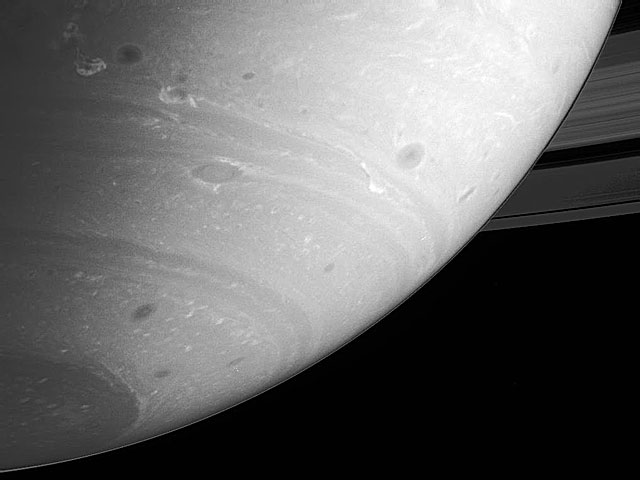Jupiter is well known for the storms that rage across its upper atmosphere, especially the Great Red Spot. But Saturn has storms too. They’re not as large, intense or large lived, but compared to Earth, they’re enormous. And Saturn has one of the big mysteries in the Solar System; a hexagon-shaped storms at its poles.
You can also check out these cool telescopes that will help you see the beauty of planet Saturn.
Winds blow hard on Saturn. The highest velocities are near the equator, where easterly blowing winds can reach speeds of 1,800 km/h. The wind speeds drop off as you travel towards the poles.
Like Jupiter, storms can appear in the bands that circle the planet. One of the largest of these was the Great White Spot, observed by the Hubble Space Telescope in 1990. These storms seem to appear once every year on Saturn (once every 30 Earth years).
NASA’s Cassini spacecraft discovered static hexagonal storm circling around Saturn’s north pole, including a clearly defined eyewall – just like a hurricane. Each side on the northern polar hexagon is approximately 13,800 km long, and the whole structure rotates once every 10 hours and 39 minutes; the same as a day on Saturn.
Here’s an article about a time when Cassini tracked a long-lived lightning storm on Saturn, and another about the strange “Dragon Storm” seen in the planet’s southern hemisphere.
Here’s an article about the northern hexagonal storm from MSNBC, and Astronomy Picture of the Day has an image of storm alley on Saturn.
We have recorded two episodes of Astronomy Cast just about Saturn. The first is Episode 59: Saturn, and the second is Episode 61: Saturn’s Moons.


What are the current guesses re. the causes and nature of the hexagonal storms at the poles of saturn?